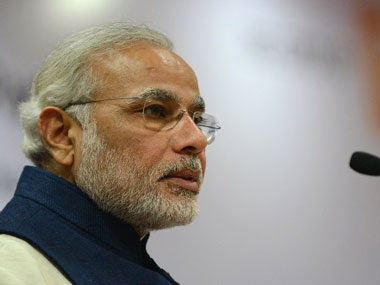Prime Minister Narendra Modi on Wednesday launched Micro Units Development and Refinance Agency (Mudra), with a mandate to refinance and regulate micro finance institutions (MFIs) and fund small units that are typically excluded from the mainstream banking system. Mudra Bank, first announced in the 2015 Union Budget by finance minister Arun Jaitely, would have an initial fund corpus of Rs 20,000 crore and the backing of another Rs 3,000 crore credit guarantee fund. The institution, as Jaitley envisages, would offer the much needed breather for about 5.8 crore small business units, which do not typically get funding. According to government estimates, only 4 percent of these firms currently avail funding from institutional channels. Commercial banks tend to avoid taking exposure to these units given their high-risk nature and also due to the fact that many of these companies are start-ups with no performance background, which, in the eyes of a banker, is a risk. In this backdrop, Mudra Bank should offer relief to several thousands of small units in the country. As per the initial plan, the bank would offer loans up to Rs 10 lakh to small entities classifying them in three categories — Shishu, Kishor and Tarun. Shishu companies can get loans up to Rs 50,000, Kishor up to Rs 5 lakh and Tarun up to Rs 10 lakh. But the government needs to answer to the following questions when the new agency comes into the picture: [caption id=“attachment_2189225” align=“alignleft” width=“380”]  Narendra Modi. AFP[/caption] 1. In the current structure of financial intermediaries, there are a few refinancing agencies already engaged in funding small units, even though their success rate in achieving the mandate is debatable. These include National Bank for Agriculture and Rural Development (Nabard), Small Industries Development Bank of India (Sidbi) and National Housing Bank (NHB), which act as refinancing agencies and semi-regulators in their own respective core sectors. According to official data, Nabard has a loan book of Rs 2.12 lakh crore as of end fiscal year 2014 and NHB has Rs 39,000 crore. Is there need for yet another agency? Wouldn’t it have been better if the government chose to widen the scope of existing agencies, by restructuring their scale and scope? 2. There is an obvious case of conflict of interest arising in the operations of the bank acting as a refinancing agency and the regulator for small companies. Wouldn’t this lead to conflicts in its operations once the entity grows in size? 3. As mentioned above, one of the reasons why large commercial banks have stayed away from funding small- and medium-sized units is their high-risk nature. Mid-sized firms are a source of a large chunk of bad loans in the books of most of the state-run banks, which have taken exposure to these entities. This job would have been served better by the new set of small finance banks, whose mandate is exclusively to fund small-sized companies than a new agency. Also, most of the large MFIs are in a transition phase to become small banks. Hence, wouldn’t these entities, which have the domain knowledge, be better placed to fund small units than the Mudra Bank? 4. World over regulators have warned about the growth of shadow banks in a financial system. Shadow banks are entities with very little or no regulatory oversight, but still takes significant credit exposure to high-risk segments. When these entities grow to a certain size, any crisis that arises in their operations can have systemic impacts and spill over effect to the rest of the financial system. This is the reason the RBI has been discouraging the non-banking finance companies by tightening regulations. It is not clear at this stage whether Mudra bank’s operations would come under the supervision of Reserve Bank of India (RBI). If not, wouldn’t there be a potential risk in the operations of the proposed entity, when it grows in size? 5. Currently, the RBI is the regulator for NBFC-MFIs, which constitute the majority in the microlending industry in terms of assets. If the Mudra Bank takes up the role of microlending regulator, the issue of multiple regulations arises. Wouldn’t that create problem for these institutions? Given the lack of clarity in the set-up, the safest and simplest way probably was to build a financing model for small companies by permitting maximum number of small finance banks. These institutions, whose mandate is specifically to fund small units, could come under the direct regulation of the RBI. As of now, Mudra Bank has an obvious risk of endorsing shadow banks in a financial system. (Data support from Kishor Kadam)
Given the lack of clarity in the set-up, the safest and simplest way probably was to build a financing model for small companies by permitting maximum number of small finance banks
Advertisement
End of Article


)

)
)
)
)
)
)
)
)



